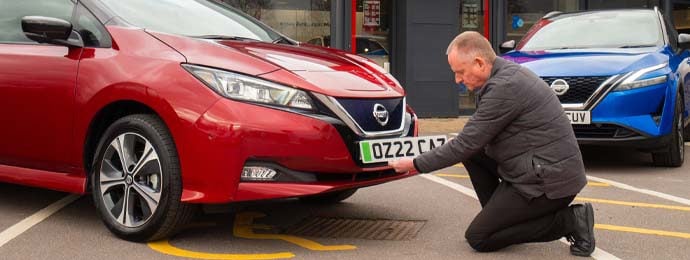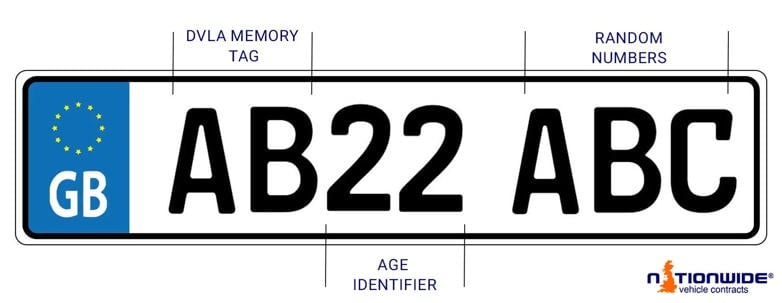Reading a Number Plate – The Characters & Meanings
Ever wondered what number plate characters mean? The British number plate system can cause confusion, with a range of number plate characters holding different connotations. What does a number plate mean and what is it comprised of?
We’ve prepared a handy guide to help improve your understanding of number plates, showing how reading a number plate works and why some plates may differ depending on the vehicle being driven.

Understanding Number Plates
Across England, Wales and Scotland, the current number plate system has been around for a few decades – but has seen multiple changes compared to vehicles that existed before 2001.
So, what do number plates actually mean?
There are seven number plate characters, arranged in the format of two letters, then two numbers, a space, and then a further three letters. Each area of the plate has a different meaning – helping to make reading a number plate easier.
The first two letters (XXXX XXX) are known as the DVLA memory tag. This shows where the car was first registered. Usually, despite the closure of regional DVLA offices, dealers are allocated number plate characters relevant to an area code. For example, BA or BY at the start of a number plate will often mean the car was registered in Birmingham or a nearby area. Welsh cars often start with a C for Cymru, and Scottish with an S for Scotland.
The number that follows (XXXX XXX) is known as an age identifier. When people understand number plates, they will often be able to look and state that a car was registered in a specific year – and they can tell from these number plate characters. These numbers change every six months in March and September, and it’s easy to tell them apart. If a car was registered in April 2012, it will have the number ‘12’ – the year of registration - while a car registered in October of the same year will have ‘62’ – the year of registration, plus 50. So, a car registered in 2023 will have either 23 or 73 on its number plate.
Essentially, the final three number plate characters (XXXX XXX) are random. Any combinations that can be considered offensive are withheld from the public domain.

Coloured Strips on Number Plates
Outside of the characters, you can read a number plate via the vertical strips on the left side of the number plate, or ‘flashes’. These can mean different things depending on their colour:
What does a blue strip on a number plate mean?
Before Britain left the European Union, cars often had a blue flash down the left side of the plate – a strip of colour usually filled with the EU logo with the letters ‘GB’ underneath.
This showed that the car was registered with the EU. Since Brexit, these are now no longer available on newer cars, but still perfectly legal.
Why do electric cars have green number plates?
Electric cars have green number plates as part of a new initiative for zero-emission cars, allowing authorities to easily identify cars that are electric.
These aren’t compulsory, but they can help with cheaper parking, exemptions from clean air zone taxes, and can even offer the use of specific driving lanes.
What to Look Out for When Reading a Number Plate
Now you’re armed with more information on number plate characters, you should be able to spot a few key things.
For example, letters Z, Q and I should not be used in an area code. If they are positioned on a number plate, the plate is either invalid or from another country. There are, of course, private registration plates too. If a driver has used a different font, spaced letters differently or altered the characters in any way, this is illegal.
Next time you’re out and about, put your newfound number plate reading skills to the test. You can assess this when you’re viewing new cars too!
Thinking of leasing a car? Contact us and speak to an experienced member of our sales team to discuss your options, or visit our Young Driver Leasing resource hub for more helpful advice.
Guide Information
Originally published: 2nd March 2023
Last updated: 2nd March 2023
